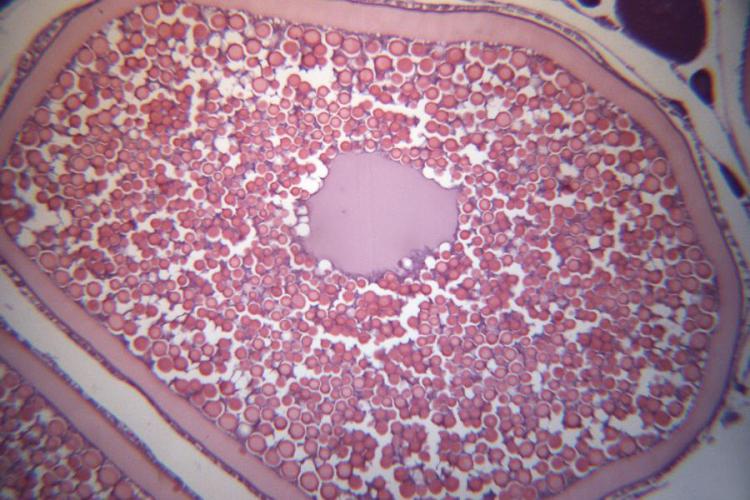
Pacific cod researcher.
Key Development
With minimal literature available on Pacific spawning aggregations in the Bering Sea, FIT investigators initially employed a combination of maturity stages documented in the literature. With continued observation of the visual changes which occur in gonad maturation during the spawning season, a more descriptive key was developed. Histological specimens were collected along with visual staging data and are now available for comparison. Preliminary analysis of the 2003 specimens indicates that the gross visual key is adequate in grouping advancing levels of maturity throughout the spawning season.
Observer Project Implementation
The Fisheries Monitoring and Analysis Division of the AFSC monitors groundfish fishing activities in the Bering Sea and provides an opportunity to collect data through fishery effort from a greater space and time range than available to FIT scientists. Early versions of the Pacific cod maturity key were provided to Observers assigned to various vessels and processing plants. Observers responded positively collecting large amounts of data from a wide range of vessel and gear types.

Histological specimens have been collected during FIT cod cruises from 2003 to 2005. Maturity stages were coded corresponding to the maturity key for specimens and many have associated photographs and written descriptions. Processing and analysis of these specimens will allow for the fine tuning the cod maturity key, or will provide evidence needed to combine stages due to lack of clarifying structures.

